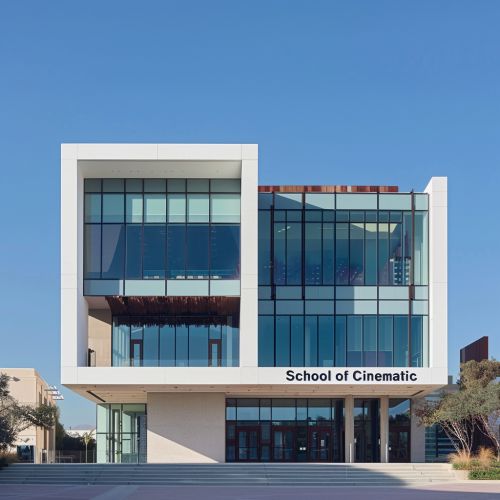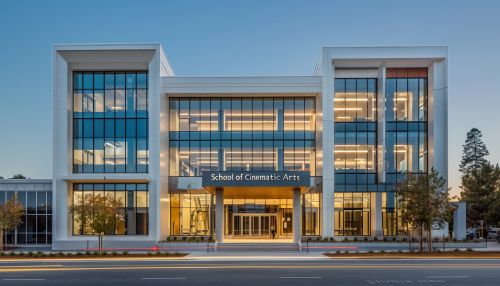University of Southern California School of Cinematic Arts
History
The University of Southern California (USC) School of Cinematic Arts, formerly known as the USC School of Cinema-Television, is the oldest and one of the most prestigious film schools in the United States. It was established as a joint venture between the university and the Academy of Motion Picture Arts and Sciences in 1929. The school was initially housed in the university's main library, but it quickly outgrew this space and moved to its current location in 1932.


The school has undergone several name changes over the years, reflecting the evolution of the film industry and the school's curriculum. It was first known as the USC School of Cinematography, then the USC Department of Cinema, and later the USC School of Cinema-Television. In 2006, it was renamed the USC School of Cinematic Arts to reflect its comprehensive curriculum that includes not only film and television production, but also animation, interactive media, and game design.
Curriculum
The School of Cinematic Arts offers undergraduate and graduate programs in a variety of disciplines, including film production, animation and digital arts, interactive media and games, media arts and practice, cinema and media studies, and writing for screen and television. The curriculum is designed to provide students with a comprehensive understanding of the art, technology, and business of cinematic arts.
The school's curriculum is known for its hands-on approach to learning. Students are encouraged to create their own films and other media projects, and they have access to state-of-the-art facilities and equipment. The school also emphasizes the importance of storytelling in all forms of media and encourages students to develop their own unique voices and perspectives.
Faculty and Alumni
The School of Cinematic Arts is known for its distinguished faculty, which includes many industry professionals and award-winning filmmakers. The faculty's expertise spans a wide range of disciplines, from film production and screenwriting to animation and game design.
The school's alumni have made significant contributions to the film industry and have won numerous awards, including Oscars, Emmys, and Golden Globes. Notable alumni include directors George Lucas, Robert Zemeckis, and Judd Apatow; writers Shonda Rhimes and David Lynch; and producers Brian Grazer and Jerry Bruckheimer.
Facilities
The School of Cinematic Arts is located in a complex of buildings on the USC campus that includes classrooms, production stages, editing suites, sound stages, and a motion capture studio. The complex also houses the Hugh M. Hefner Moving Image Archive, one of the largest university-based collections of motion picture materials in the world.
The school's facilities are equipped with the latest technology, including digital cameras, editing software, and post-production equipment. The school also has a state-of-the-art theater, the Ray Stark Family Theatre, which is used for screenings, lectures, and other events.
Research and Innovation
The School of Cinematic Arts is at the forefront of research and innovation in the field of cinematic arts. The school's research centers and labs, such as the Game Innovation Lab and the Cinematic Arts Research Lab, conduct cutting-edge research in areas such as virtual reality, augmented reality, game design, and interactive storytelling.
The school also collaborates with other departments and schools at USC, such as the USC Viterbi School of Engineering and the USC Annenberg School for Communication and Journalism, to explore the intersection of technology, communication, and storytelling.
